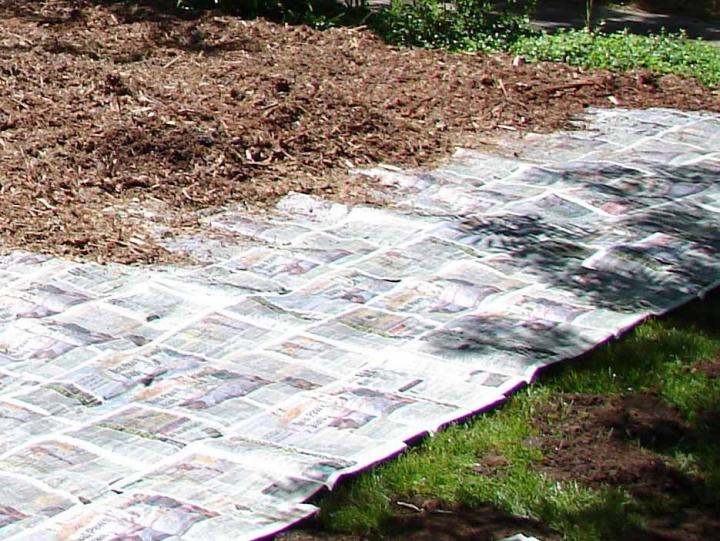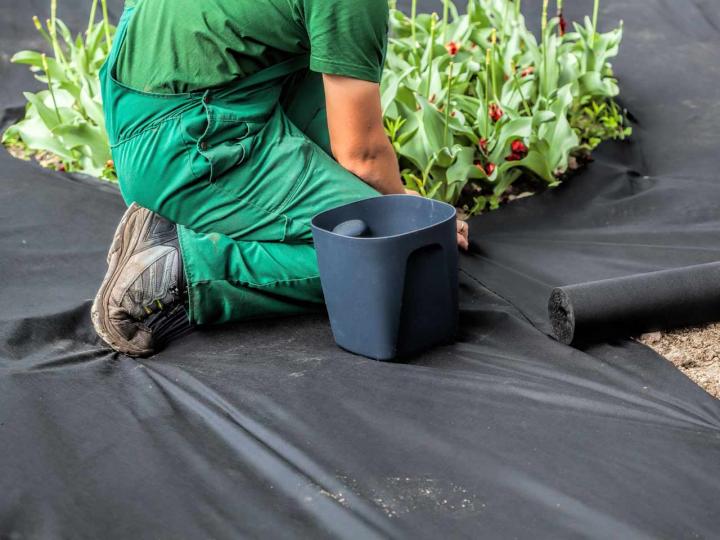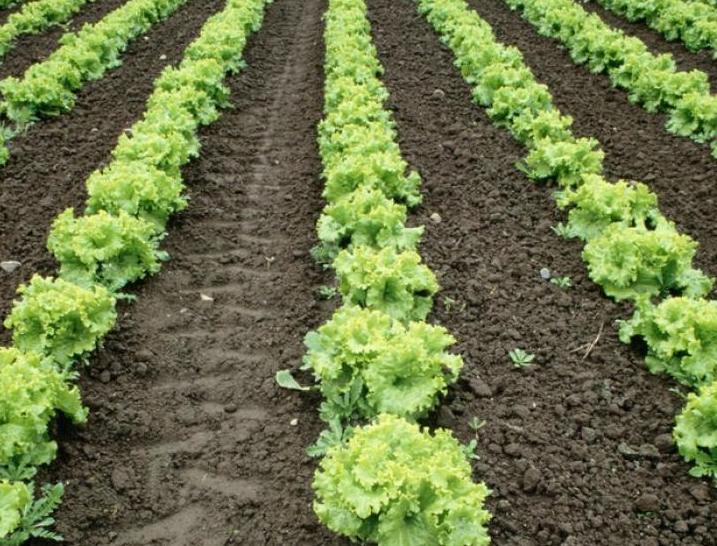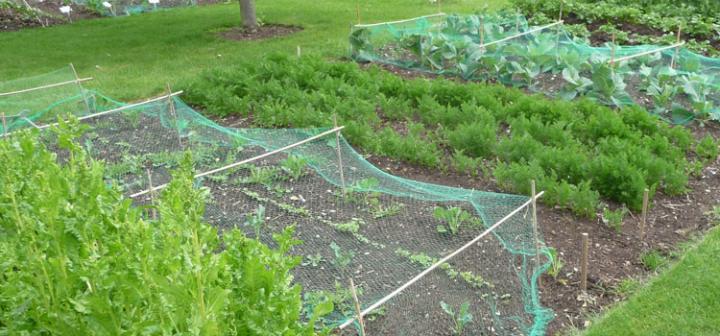Want to start a garden from scratch? Here’s how to clear your land—whether it’s replacing lawn grass or reclaiming a weedy field. If the soil is spent or neglected, we’ll also help you restore the soil to make it productive again!
YOUR GARDEN LOCATION
Before you clear your lawn or land, let’s start with four basics in terms your garden location.
- Sun! Most plants need sunlight. If you’re planting a vegetable garden, crops need 6 to 8 hours of direct sunlight so it can’t be too shady.
- Avoid land that has lots of rocks or lots of invasive grasses (such as Johnsongrass and invicible Bermudagrass) as it will be very difficult for your garden to be successful.
- Avoid floodplains or steeply sloped areas, as they can present challenges related to water and access.
- Heavy clay soil is also going to be challenging; in this case, we would recommend raised bed gardens.
We’re going to break this section into two areas: 1. simply removing lawn grass for a garden and 2. clearing unused land for a larger-scale garden or small farm.
REMOVING LAWN GRASS FOR A GARDEN
Ideally, you start this project in the fall. If you need to need to start your garden immediately, see our “quick versions” below.
We prefer to use the first “smothering method” with cardboard, but we’ve included two other methods which gardeners use for a no-chemical approach: solarization and manual digging.
Smothering Method
- Define your garden bed. Take a hose or string or rope and outline the garden’s shape. A rectangle is easiest.
- Start by clearing the surface of any debris and any rocks larger than a hen’s egg. Mow down grass or cut back weeds to the ground.
- If there are lots of weeds on the ground where you want to grow, lay down a layer of cardboard or 8 to 10 sheets of newspaper, overlapping the edges by at least 6 inches. If you’re using newspaper, make sure the sheets have black ink only (no color) and cardboard needs to be unwaxed. Mark out paths between the beds using thick cardboard laid with generous overlaps. This will help to kill off the weeds between growing areas. You can cover the cardboard with bark chips or similar later.
- Thoroughly wet the cardboard to help it break down. The cardboard will serve as a further barrier to weeds, exhausting and eventually killing most of them off. Once the growing season gets underway, you’ll find that any weeds that do manage to make it through will be much easier to remove.
- Now add a thick layer of well-rotted organic matter. Add compost 3 to 4 inches thick over the paper or cardboard to hold it down. Fast forward a few months and any grass and weeds below will have rotted down, returning all that wonderful nitrogen back to the soil. Earthworms will work to gradually incorporate the organic matter into the soil below. You’re left with loose, dark, moist soil with no weeds.
If the organic matter in your bed is still lumpy at planting time, start vegetable seedlings off in plug trays or pots to plant out once they’ve grown a sturdy root system. This will also make it easy to space plants out at exactly the right distance, saving you time thinning out rows of seedlings.
See our full video showing you how to create a no-dig garden.

Solarizaton Method
Use the power of the Sun! Cover the area with a clear or black plastic tarp; the ground beneath the plastic will heat up so high that it will scorch living grass, as well as weeds, seeds, and soil bacteria. Within about four weeks, your grass should be dead and beginning to break down. You can then dig the dead grass into the soil, adding compost or other soil amendments if you wish, and plant your garden bed.

Manual Method
Though this method requires more physical effort, it’s also very effective and quick. Have a sharp spade on hand. Water the lawn a day prior to grass removal then use the spade to cut the lawn into 1-square-foot sections. Remove each section by sliding the spade beneath the segment and levering it up and out of the ground. Discard grass (because it will have weed seeds).
Work compost into the soil when you first start a garden to give plants the food and nutrient they need. Then ensure the soil is raked so it’s level before planting. Do not step on your soil or it will become compacted.
QUICK VERSIONS TO CONVERTING LAWN TO GARDEN
Smothering technique
Follow the smothering technique above, using layered newspaper. This quick technique assumes you have good soil (versus weedy, neglected, spent soil).
- Soak the newspaper layers with water.
- Place plants at proper distance (as indicated by your plant labels)
- Cut through the wet newspaper to dig a small planting hole for each.
- Plant and spread excess dirt on paper
- Cover all newspaper with a few inches of mulch. If you are planting a vegetable patch, covering with straw (versus mulch) is another option.
If you have clay soil, you can also build raised beds right on their lawns, and line the bottoms with cardboard to smother the grass – a technique that makes it possible to fill the beds and start gardening right away.
The next step is to ensure your soil is healthy. See our advice on soil preparation and testing.
“Back to Eden” technique
A common variation is to use materials that are readily available to nourish and build soil. Popularized by organic gardener Paul Gautschi in his “Back to Eden” method, materials such as woodchips are used to mimic Mother Nature’s infinite ability to recycle nutrients.
Build a bed with thick layers of newspaper over cleared ground. Wet it down. Top with about four inches of compost, then add a layer of woodchips about two inches deep, taking care not to mix the two layers. Then simply push aside the woodchips to plant into the compost beneath. You could of course use other materials such as leafmold or hay in place of woodchips. The secret of this top layer is to slow down evaporation and constantly feed the soil below, so that no additional fertilizers are ever required.

CLEARING A FIELD OR LAND FOR CROPS
If you’re planning a larger garden or small farm, you’ll want to ensure that you also take the time to restore the soil for planting. Most fields of weeds indicate spent or neglected soil, but we can reclaim that land!
- The first job is to cut brush and small trees back to the fence line. Even if you can’t do anything else right away, do this before these trees get the soil acclimated for the pine cycle that will follow. Each bush and tree is part of the cycle and prepares the soil for the next stage. Catching it before the soil has changed significantly is half the battle.
- Using a heavy-duty pair of lopping shears, cut small growth straight across and as close to the ground as possible. A sharply cut sapling stub will go straight through a tractor tire or the sole of a shoe. Larger sapling and tree stumps will have to be pulled out.
- Walk the area and mark the location of any rocks. The larger rocks were probably plowed around once upon a time, and you may choose to take the route, but it’s best to remove as many rocks as possible.
- To see how big a rock is, hit it with a crowbar. If it makes a high-pitched *DING* that normally indicates a larger rock that needs to be dug or pulled out; if it makes a duller sound it should be a rock that you would be able to handle with a normal shovel or even your bare hands.
RESTORING YOUR SOIL
- To stimulate the soil, plant manure crops or “cover crops.” Even if you don’t use them for food or forage, they help restore the soil to make it better suited for crop growing.
- Rye is the best known green manure crop. Others that enrich the soil include cowpeas, mustard, oats, alfalfa, clover, winter peas, and timothy.
- The legumes return nitrogen to the soil along with organic material, and are a good choice for long-term soil development. Winter rye is good to plant in the fall and plow two to three weeks before spring planting. White clover is good for bees if you let it flower before plowing under. Alfalfa is expensive to plant, but its deep roots do wonders for your soil. Treefoil is a good choice for wet areas.
- Cowpeas, mung beans, and mustard are good for spring planting. They germinate in cold soil and are planted as soon as the ground thaws. In four to six weeks they can be plowed under, and these are good for preparing vegetable garden if you couldn’t get to your land in the fall.
- Allow two or three weeks between plowing under and planting. A rear-tined roto-tiller will chop up the vegetation well as it incorporates it into the soil. The principle of a green manure crop is that as it decays after being plowed under, it returns to the soil all the nutrients it used while growing. It also adds vital organic matter, so all types of soil, from sand to clay, respond positively to this treatment.
- The return of organic material to the soil, sadly, isn’t a one-time project. It must be continuous in the form of planting or fertilizing with compost, leaves or animal manure, if the decay process is to continue.
ROTATION PLANTING
- Once you’ve fertilized your field (each year’s mulch plowed under helps, so do shredded leaves) you can further improve it by rotation planting. This means dividing your land or garden into several areas and planting different things, changing them each year. Alfalfa, corn, and wheat are good choices to rotate. Even if you don’t use the crops for food, your soil will be improving instead of deteriorating.
That’s about all you can do your first year. Repeated each year, however, this process will turn even solid clay or sand into a fine garden in about five to six years. If that seems like forever, don’t worry about it! That doesn’t mean you have to wait that long to harvest vegetables. Most gardens grow under less than optimum conditions, and the harvest still turns out great! Your garden will be easier to care for and more productive each year.
Source / The Old Farmer’s Almanac

